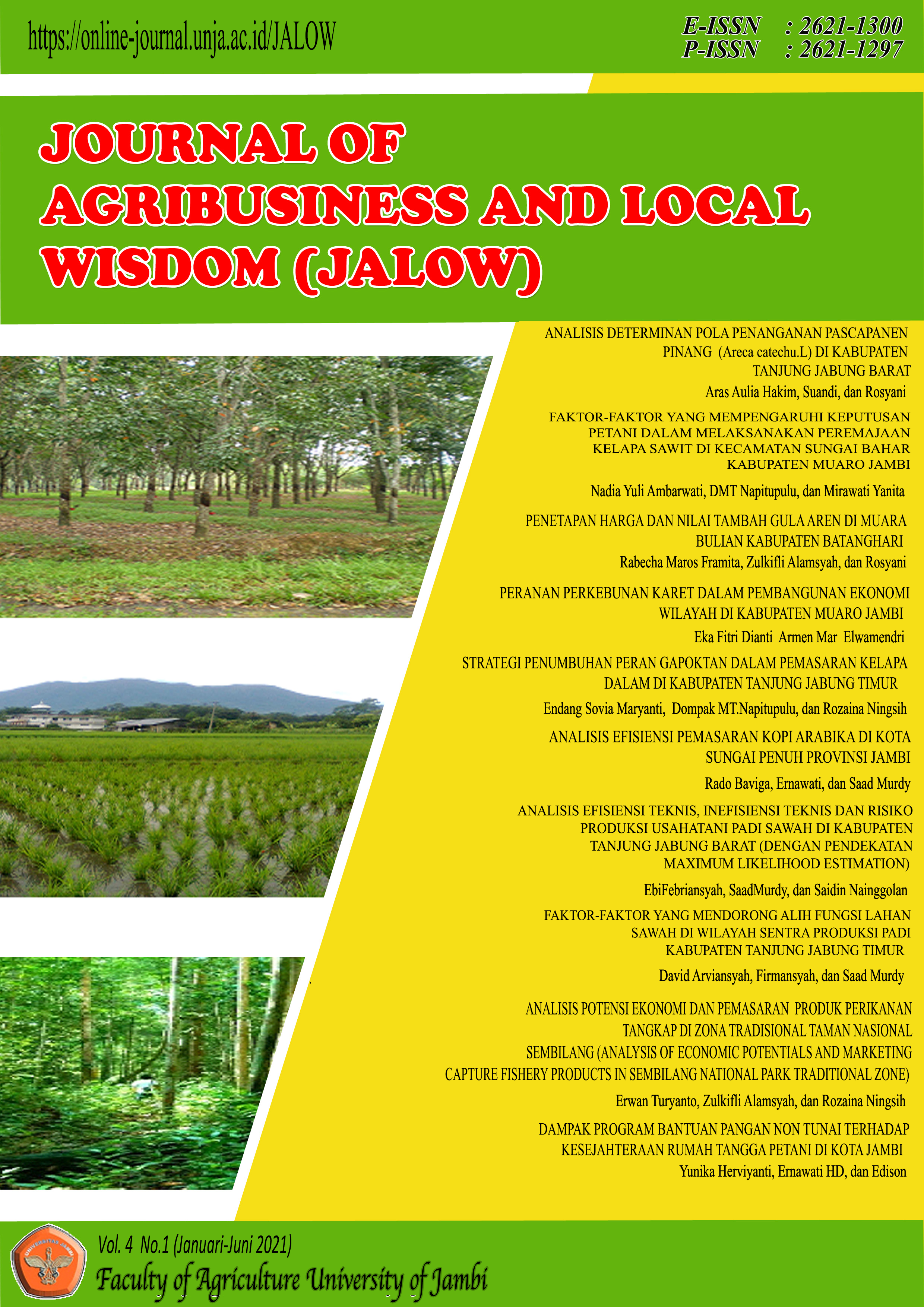ANALISIS EFISIENSI TEKNIS, INEFISIENSI TEKNIS DAN RISIKO PRODUKSI USAHATANI PADI SAWAH DI KABUPATEN TANJUNG JABUNG BARAT (DENGAN PENDEKATAN MAXIMUM LIKELIHOOD ESTIMATION)
DOI:
https://doi.org/10.22437/jalow.v4i1.13324Keywords:
Technical Efficiency, Technical Inefficiency, Productivity Function, Risk PENDAHULUANAbstract
This study aims to determine (1) Analyze the production picture of the use of lowland rice farming input in Tanjung Jabung Barat Regency, (2) Analyze the use of production function inputs and productivity on the risk of production of lowland rice farming in Tanjung Jabung Barat Regency, (3) Analyze the risk relationship production with technical efficiency of lowland rice farming in Tanjung Jabung Barat Regency, (4) analyzing the factors that influence the technical inefficiency of lowland rice farming in West Tanajung Regency. The study was conducted in Batang Asam District and Renah Mendalo District with a sample of 120 respondents. Technical efficiency analysis is carried out with the Stochastic Frontier production function. Risk analysis is performed by calculating the value of the coefficient of variation, the factors that affect risk in the analysis with the Cobb-Douglas production function with the Just and Pope method, the analysis of the relationship of production risk with technical efficiency using the Chi-Square method, while the factors affecting the occurrence of efficiency technical and technical inefficiencies used the Productivity Function model.
The results showed that (1) Factors of seed production, urea , SP36, KCl, organic, medicine, labor and land area were factors of production that could significantly increase paddy rice production. (2) Production factors, seeds, organic fertilizer, and labor and land area are production factors that can reduce variations in paddy production, so that these factors are factors that can reduce production risk (risk reducing factors), (3) Efficiency Value the technical use of production factors of 66% is technically inefficient (ET = 0.66 <0.70). This means that opportunities for increasing productivity are still available by 34%. (4) Socioeconomic factors that are negative about inefficiency are experience, activity in farmer groups, variable land distance from farmer houses and number of family members.












